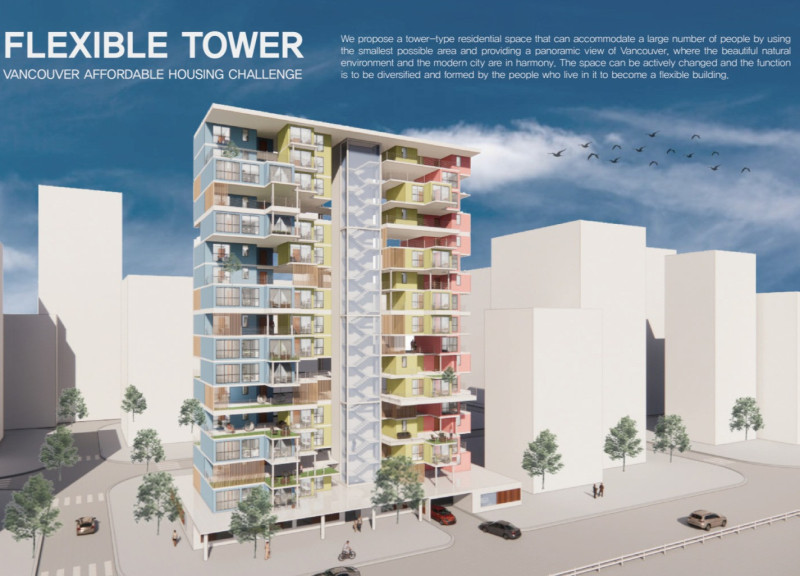5 key facts about this project
The Flexible Tower is a modern residential design located in Vancouver, aiming to provide adaptable housing options in an urban environment. Positioned next to a park, the design connects the living spaces with nature while making the most of the available views. Overall, the focus is on creating a modular living space that can accommodate a diverse community through flexible unit configurations.
Concept and Layout
The design emphasizes flexibility, allowing units to be added or removed based on residents' needs. Inside the tower, there are various types of units: one-person, couples without children, and families. This variety allows for accommodating a broad range of lifestyles common in urban areas. Open floor plans and large windows enhance natural light, promoting an airy and welcoming atmosphere.
Materiality
The choice of materials is important for both the structure and the overall feel of the spaces. Concrete serves as the main structural material, offering strength and stability. Inside, wood adds warmth and comfort, making each living space more inviting. Large glass windows provide clear views and fill the interiors with light, connecting residents to the outdoor environment. Painting on the exterior contributes to a unified appearance, helping the building fit well within its surroundings.
Community Engagement
The design supports social interaction through its communal areas. These shared spaces are strategically placed to be easily accessible, encouraging residents to come together. This layout promotes a sense of community, allowing for relationships to form among neighbors. The balance between private units and public areas is critical, offering places for both socializing and personal retreat.
Vertical Stacking
The vertical stacking of units creates visual diversity on the building's exterior while maintaining functional use of space. The staggered arrangement of the floors adds a pleasing dynamic to the overall silhouette without losing efficiency. Centrally located stairs and elevators enhance movement throughout the tower, ensuring that it remains easy to navigate. This thoughtful design not only addresses housing needs but also contributes positively to the urban landscape of Vancouver.



















































